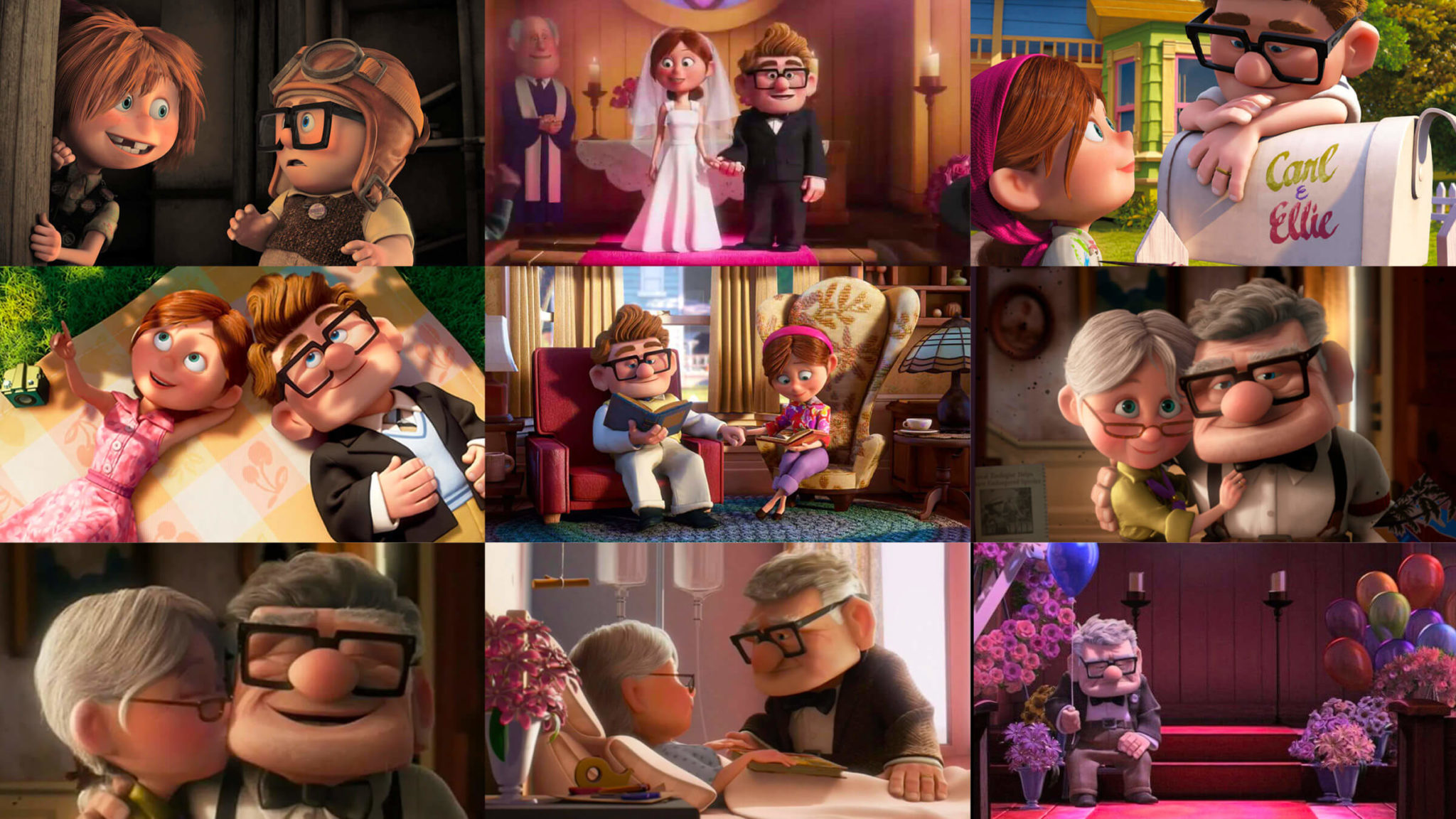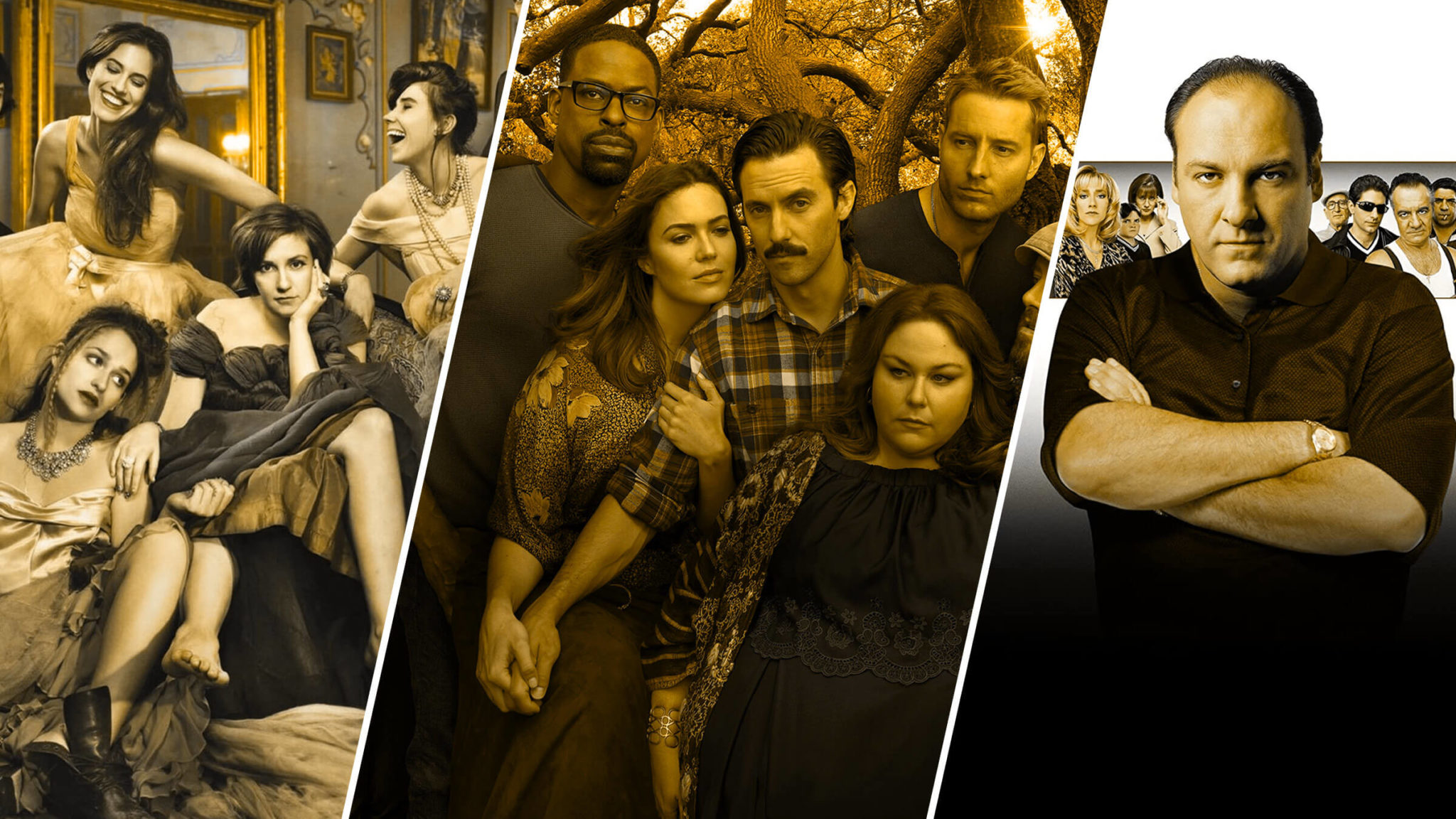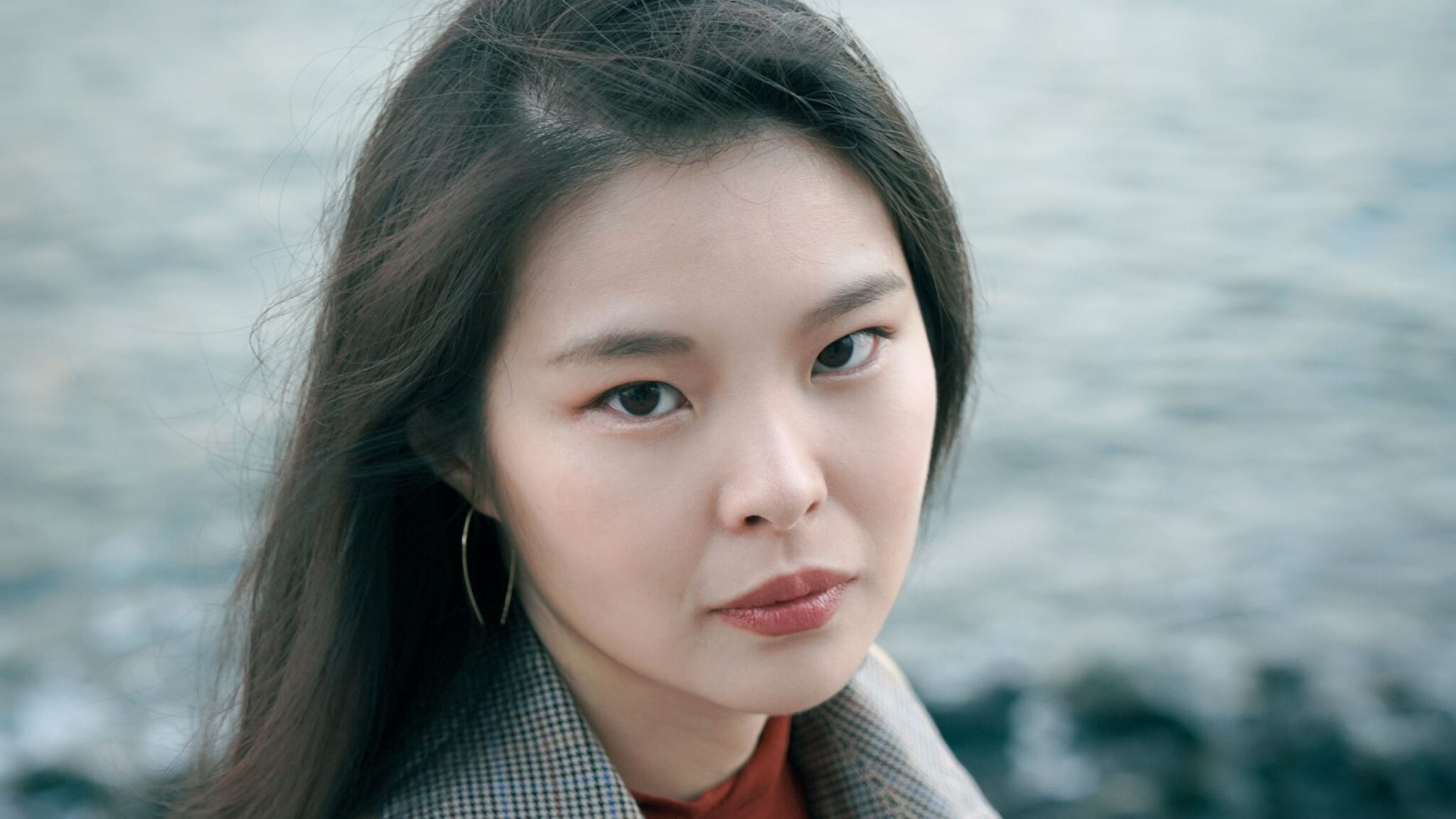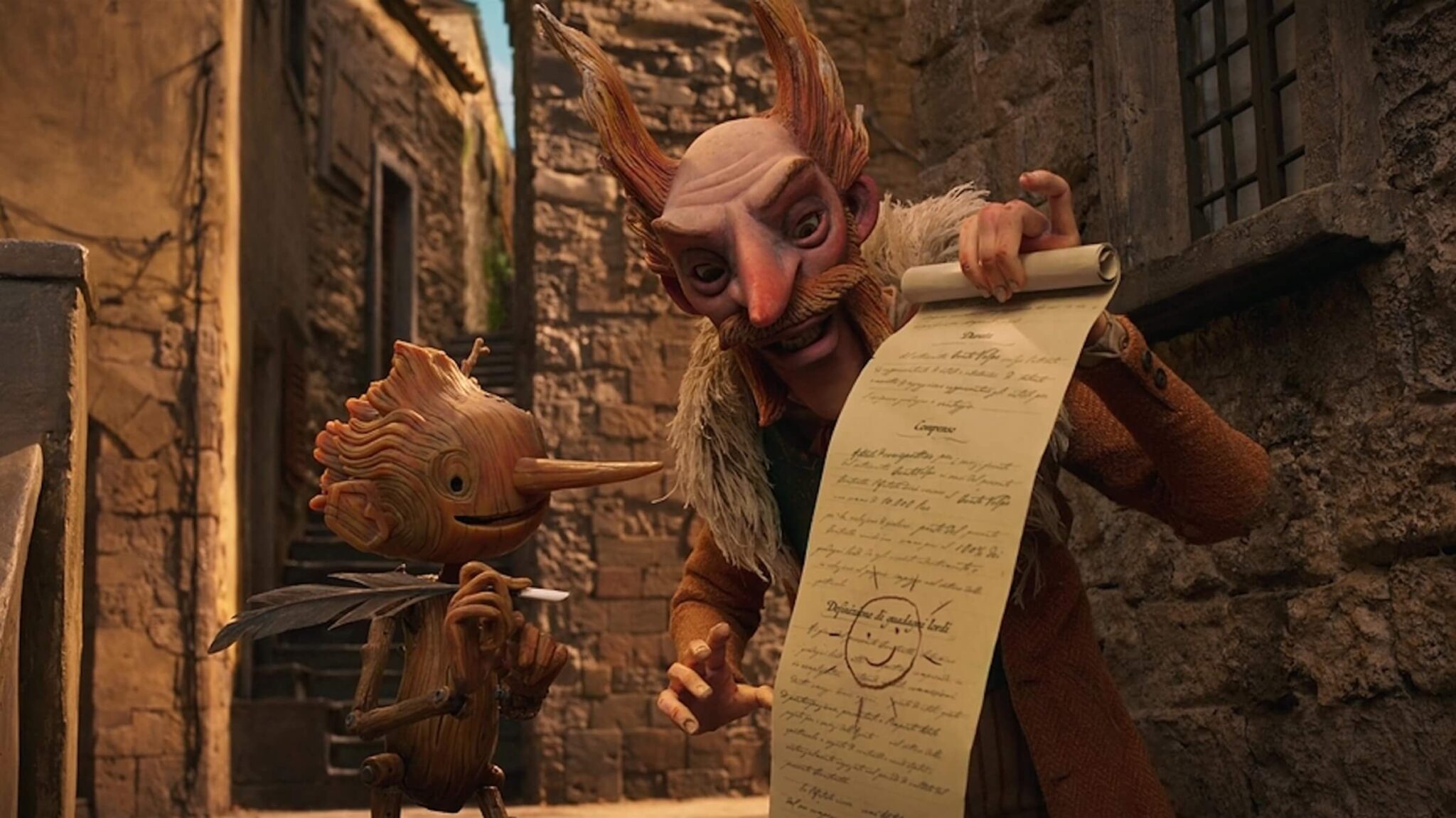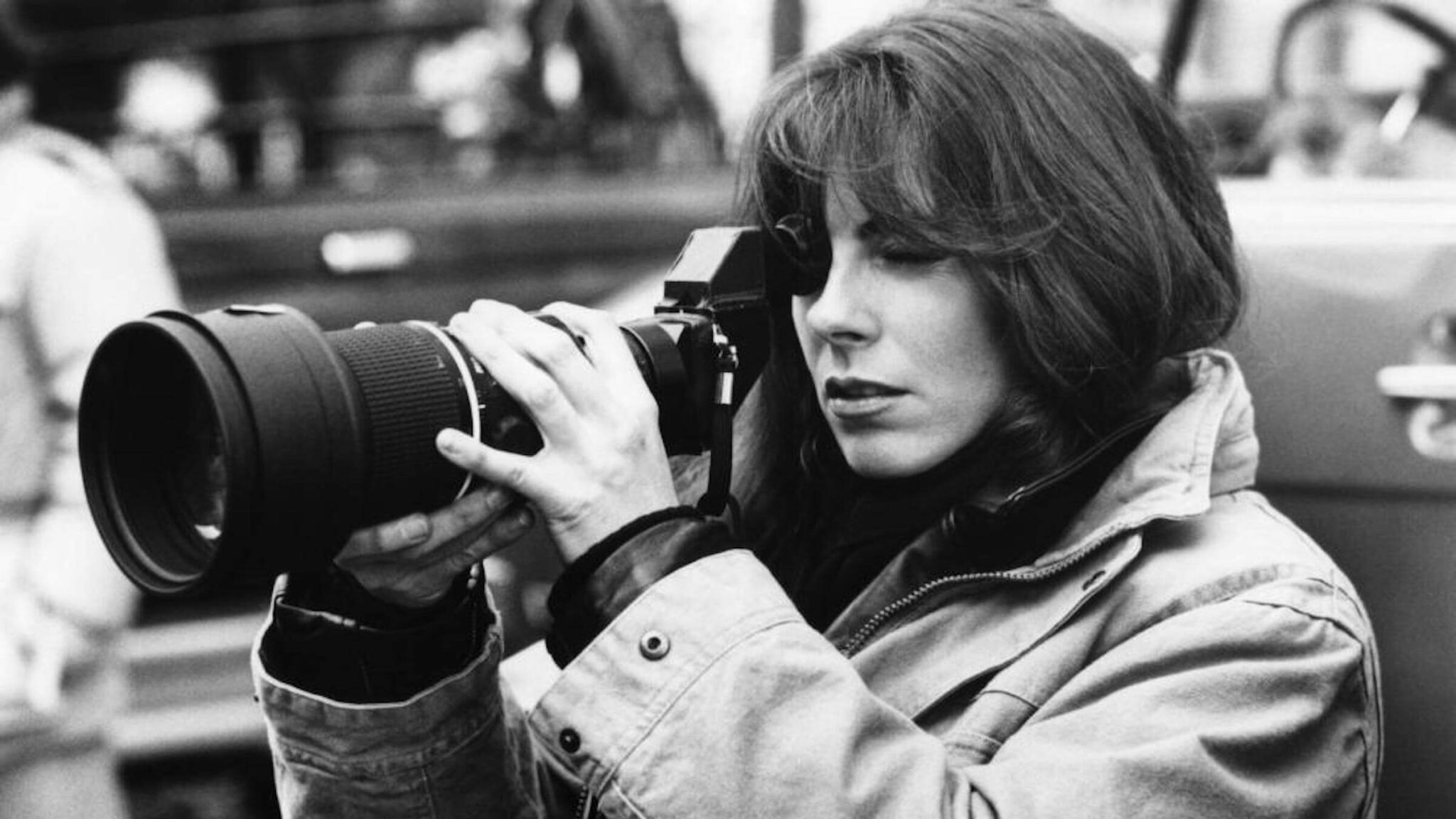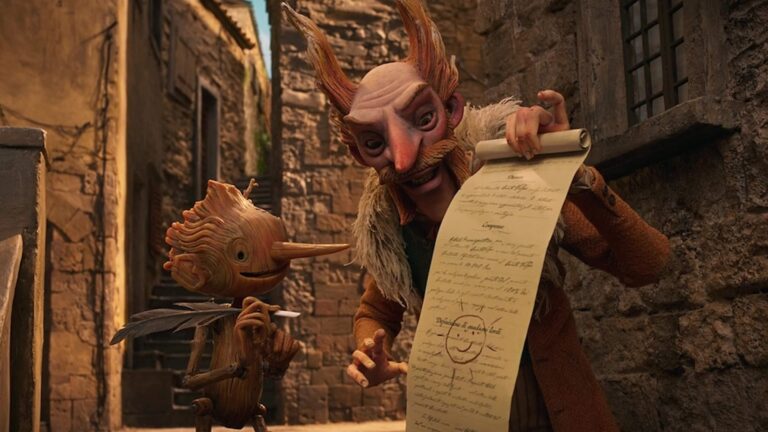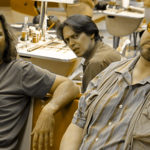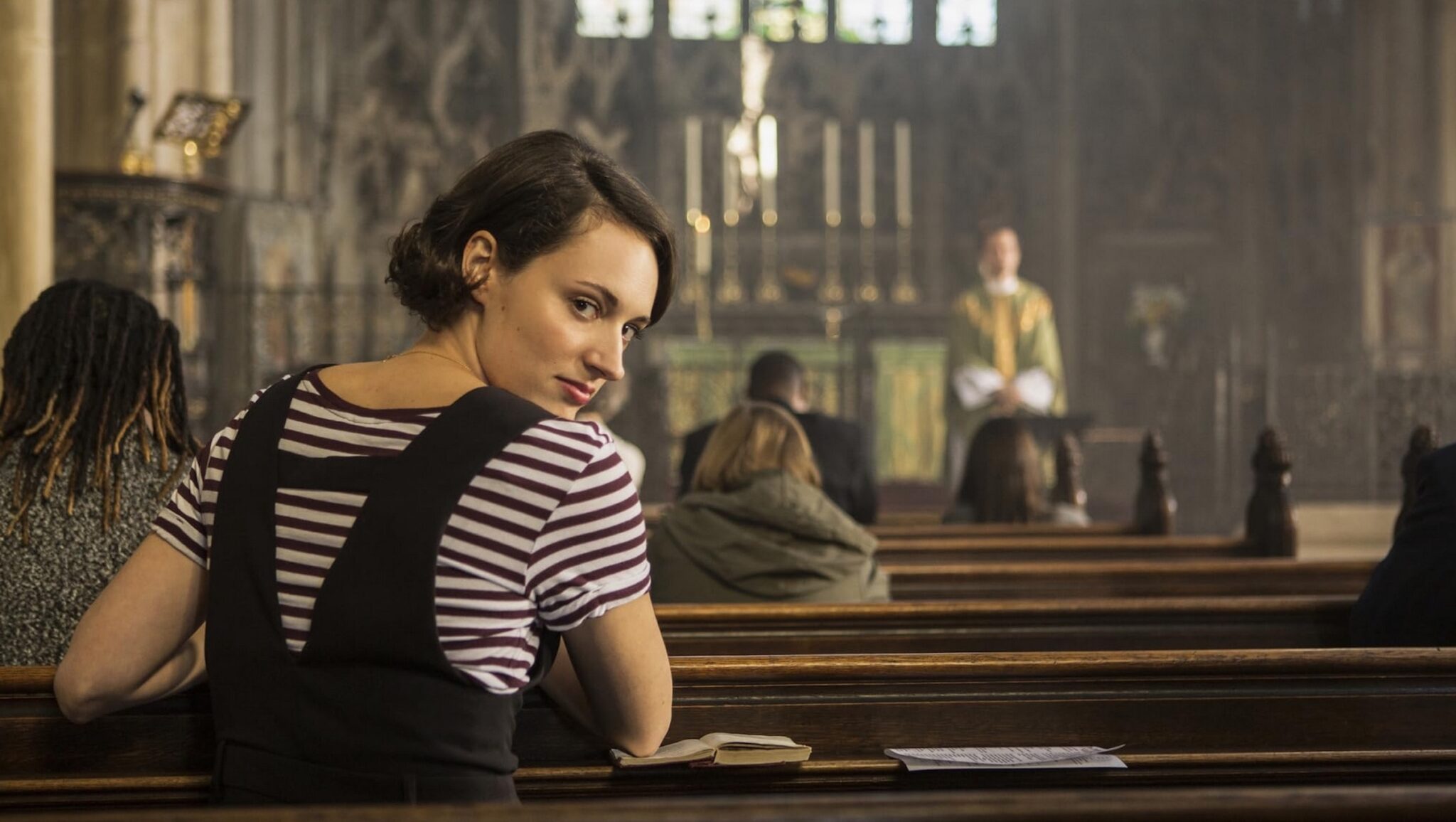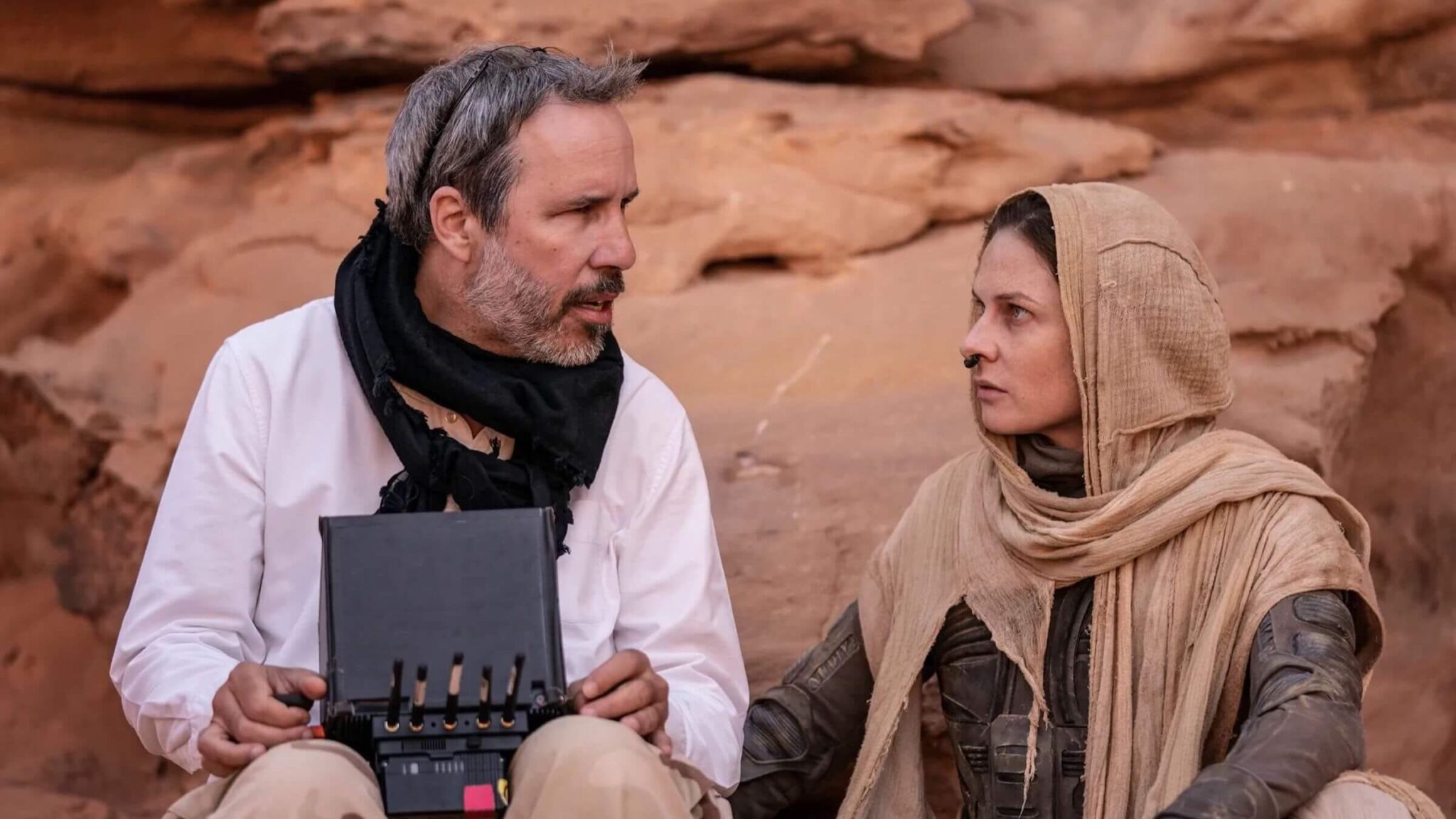
How do you write a screenplay that is a slow-burn character piece — and still manage to keep the story compelling and engaging for an audience or script reader? Enter auteur Quentin Tarantino's 9th film, Once Upon a Time in Hollywood.
After exploding onto the cinematic forefront of our minds in the early 1990s, Quentin Tarantino has become one of the most iconic faces of screenwriting. For over two decades his scripts have given us perfect examples of unique storytelling, dynamic dialogue, and some of the most interesting characters ever to hit the big screen.
In July of 2017, Quentin Tarantino announced that he had written a screenplay that involved the Manson Family murders of 1969. Harvey and Bob Weinstein, his long-time collaborative partners, were initially attached to the project until Quentin went his separate ways in the wake of Harvey's sexual abuse allegations.
There was a bidding war between Sony Pictures, Warner Bros., Universal Pictures, Paramount Pictures, Annapurna Pictures and Lionsgate for the distribution rights. Sony won.
Many actors were connected with the film in its early stages. Brad Pitt was always in the conversation. Samuel L. Jackson was rumored to be in the running for a major part as well. Tom Cruise and Tarantino were in talks for Cruise to take on a lead role at one point.
Meanwhile, the script was constantly changing. Pitt was initially up for a detective role — a character that was investigating the Manson Family murders. However, it seems that Tarantino's script evolved away from an outright Manson Family-centered story to one that focused more on Hollywood circa 1969 — the year of the murders — through the eyes of two fictional characters (amalgams inspired by real Hollywood figures during that time); fading Hollywood star Rick Dalton and his best friend, assistant, and stunt double Cliff Booth.
Leonardo DiCaprio and Margot Robbie were signed.
In May 2018, Burt Reynolds, Tim Roth (his scene was cut), Kurt Russell, and Michael Madsen joined the cast with the latter three in small roles. Reynolds would pass away before filming his scenes. Bruce Dern was brought in to replace him.
Timothy Olyphant, Damian Lewis, Luke Perry, Emile Hirsch, Dakota Fanning, Clifton Collins Jr., Keith Jefferson, Nicholas Hammond, Al Pacino, Scoot McNairy, Spencer Garrett, James Remar, Brenda Vaccaro, and Mike Moh later joined the cast.
Damon Herriman was brought in for a brief appearance as Charles Manson — with the additions of Lena Dunham, Austin Butler, Danny Strong, Rumer Willis, Dreama Walker, and Margaret Qualley cast in supporting roles.
Upon the film's release, it marked the best debut for any Quentin Tarantino film and was heralded by most critics.
But what is it about this script that works for so many?
Warning: Spoilers Below! If you haven't seen the film, save this post in your Bookmarks and return to it after you've seen it!
Featuring a Time and Place as the Main Character
Nothing much really happens in Once Upon a Time in Hollywood — at least that's how it feels, plot-wise. Yet you'll find it very difficult not to be engaged by what you are reading or seeing.
That is primarily because one of the main characters of the film isn't played by a movie star, character actor, or Tarantino regular. Instead, Hollywood circa 1969 is the star.
Tarantino offers a well-researched script that places us within that time and place.
We're engrossed by the celebrities that pop in and out of the story.
We're transported to the Playboy Mansion, which was the party to attend in Hollywood.

We get to see Bruce Lee's status as Hollywood's go-to Kung Fu trainer to the stars and fight choreographer, who at the time was a few years back from his worldwide celebrity status after the posthumous release of Enter the Dragon in 1973. In 1969, he was known more in the states for his brief role as Kato in The Green Hornet.

Read ScreenCraft's 33 Screenwriting Lessons from the Philosophy of Bruce Lee!
We see the dynamics of Hollywood Western sets, the actors that portray the heroes and villains, and we even get a taste of what it's like to be a child actress in that era.

And then we also get an inside look into the hustle and bustle of Hollywood through the eyes of a fading actor and his stunt double with a bad rep best friend.

We also get to see the underbelly of Hollywood — namely the eerie hippie culture of the Manson Family.

Hollywood is the titular character of this screenplay.
While Tarantino's early and most successful screenplays — True Romance, Reservoir Dogs, and Pulp Fiction — were plot-driven (accentuated by outstanding characterization), Once Upon a Time in Hollywood shifts that tone and atmosphere to the characters and their places within Hollywood circa 1969.
In your screenplays, the world that you present can take on a significant role within your cinematic story. Yes, the characters and plot are equally important. But some stories have worlds that need to take center stage.
Research your worlds well. Give readers and audiences the feeling of being there in that time and place you've chosen to set your screenplay.
Writing What You Know
Yes, this is the old screenwriting adage that so many screenwriters misinterpret as meaning that your best writing will be on subjects that you know personally or experiences that you’ve experienced.
There is undoubtedly some truth to those statements, but the meaning behind this phrase is more significant than that.
Writing what you know is all about applying your own experiences, perspectives, beliefs, and emotions into any necessary storyline. That’s how you connect with the material.
Tarantino loved 1960s-1970s era Hollywood. He knew that world. He walked those streets. He remembered the storefronts, the bars, and the cars. He remembered the celebrities, and he knew the films of that era. So he built a story around what he knew. He created a central character that was that time and place. It was his love letter to Hollywood, 1969.
Writing what you know isn't about writing stories that you experience. It's injecting the passions, memories, and emotions that you have in life into any story that you craft.
Tarantino never knew any of the Manson Family. He didn't personally know movie stars of that time and place.
But he had a love and passion for that era. And the screenplay is layered with that.
Intertwining Themes and Plot Points
Tarrantino masterfully intertwines his characters with a central common theme and event. It's his signature talent in most of his screenplays.
We saw this in Reservoir Dogs, and we especially saw it in Pulp Fiction. And he takes this to another level in Once Upon a Time in Hollywood.
Yes, the Manson Family murders are the plot point that Tarantino's characters have in common. The story and character arcs of Rick, Cliff, and Sharon will collide with that commonality.
However, Tarantino takes the idea of intertwining themes and plot points to a deeper level in this script. And that level is, once again, mentioned in the very title — Hollywood.
While the Manson Family murders come into play, conjoining the lives and fates of Rick, Cliff, and Sharon (as well as many of the supporting characters), it's Hollywood that they all share in common.
The Hollywood dream and the business of Hollywood ring loudly within the script and each characterization of these three lead characters.
Rick represents the end of the road when an actor has perhaps gone as far as they can. That Hollywood dream has succumbed to the business of Hollywood. And he's struggling with this conflict. He's questioning his worth.

Sharon represents the Hollywood dream in its purity and newness. She's an up-and-comer, but she's seeing her dreams come to life. She's married to the hottest director in town. She knows all of the stars. And this concept is especially sold during the sequence where she visits a theater that is showing a movie, The Wrecking Crew, that she's in. She sits in front of the screen, enamored with the magic of cinema as her performance draws the intended laughs. The Hollywood dream come true — going to the theater to see the movie you're co-starring in.

Cliff represents the backlot of Hollywood. It's a business. And he's in the business of carrying Rick's load, in terms of stunts for the screen and the various odds and ends that he takes care of in Rick's life. He's the handyman, the driver, and the motivational speaker when Rick finds himself in need of some encouragement.

This intertwining theme of Hollywood drives the story.
If these three characters had been living different lives in different places while working in different industries, the characterization and story would come off as listless and scattered.
But because we're witnessing varying perspectives of the same themes — the Hollywood dream and the business of Hollywood — the characters are connected, and the experience of witnessing their stories feels one and the same.
And that leaves us with the Manson Family murders...
Continual Tension and Suspense
This is the most masterful — and somewhat overlooked — aspect of Tarantino's screenplay.
We know that the Manson Family murders are on the horizon.
Cliff has a run-in with the Manson Family.
Rick lives next to the site of the murders and eventually has a run-in of his own with them.
Sharon has her own run-in with Charles Manson himself.
With the knowledge that the murders are just around the corner — literally and figuratively — every single scene within the screenplay has continual tension and suspense. We're always wondering where every little moment is leading us — and if that path is going to lead directly to the murders.
Sure, we already mentioned that nothing much happens, plot-wise, through much of the screenplay, but because this underlying tension and suspense are always present, we don't need a busy plot to keep us invested.
Plot is overrated. You can explain away plot points, twists, and turns within your story until your fingers hurt. But if you don't have continual tension and suspense within the story, you're not going to engage the reader or the audience.
This can be accomplished within most scripts if you're crafty enough to set the right tone and atmosphere.
Write a script that is centered around a familiar historical event. The script doesn't have to be about that event. You can use it to add that underlying tension and suspense, as Tarantino did with the Manson Family murders.
Maybe you're writing a New York City-based story about star-crossed lovers, but use the tragic event of 9/11 as a narrative tool to inject more tension and suspense.
Maybe you're writing a period piece set in Hawaii about a Japanese-American man falling in love with a caucasian daughter of an Admiral, but use the tragic event of Pearl Harbor as a great way to build tension and suspense throughout.
Or perhaps you open your fictional script with a harrowing fictional event and then rewind back to the days leading up to what you've opened with.
Regardless of the type of story you are trying to tell, this narrative tool is an easy way to keep audiences engaged. And Once Upon a Time in Hollywood excels at that.
As Sharon's friend Jay confronts Charles Manson in the driveway of Sharon's home — with Sharon walking towards the door to see who Jay is talking to — there is mind-numbing tension without any overall plotting. Why? Because we know what's (possibly) coming.
As Cliff walks the ground of Spahn Ranch, investigating the reason why these hippies have overrun his former colleague's ranch, there is white knuckle suspense that keeps us on the edge of our seat. Why? Because we know what's (possibly) coming.
As Rick confronts the driver and passengers of the loud car that is polluting the quiet of his private street, we're watching every little movement they make and dreading every tirade that Rick spews. Why? Because we know what's (possibly) coming.
That is the real masterful stroke from Tarantino — one that may be overlooked by some that say the story is slow-burn.
Flawed Protagonists
The characters that Tarantino creates in his screenplays are rich and inviting. They're always flawed, but instantly likable to the point that we are more than willing to just hang out with them to see what they do and listen to what they have to say.
And he makes these flawed characters likable by injecting empathetic qualities that we can relate to.
We relate to the innocent wonder of Sharon Tate.

We relate to the insecurities of Rick and we relate to the non-Hollywood and blue-collar bravado of Cliff.

Sharon could have been written as a Hollywood actress socialite that was in love with the fame and the lifestyle. But Tarantino wrote that scene within the theater to showcase that she was more enamored with the magic of cinema and the effect that her acting could have on an audience.
Rick could have been written as an egotistical has-been who thinks that he's above everyone else. But Tarantino wrote plenty of scenes showcasing the fact that he's struggling to believe in himself — and it takes a little girl to show him that he has a talent to be proud of.
Cliff could have been written as a tough-as-nails sexpot that can do no wrong. But Tarantino wrote scenes that showed us why he wasn't as successful and respected as we hoped he was.
Flawed protagonists are the best types of heroes and lead characters because we can relate to them.
Playing with People's Expectations
Warning: Spoiler Alert! Again, don't ruin it for yourself if you haven't seen the film.
Make no mistake, many of us going into Once Upon a Time in Hollywood expected Pulp Fiction 2. We expected a multi-character story structured much like Pulp Fiction, with storylines colliding into each other throughout and especially by the end.
Others expected a climax that showcased the brutality of the Manson Family murders and awaited the fates of how the fictional characters of Rick and Cliff intertwined with that fateful and tragic event.
Tarantino played with those expectations and gave us something different.
This screenplay was never going to be Pulp Fiction 2, no matter how much we wanted it to be thanks to our love for that film.
And the much-discussed ending of Once Upon a Time in Hollywood really played with people's expectations.
Learn the best way to structure your screenplay with this free guide.
When the Manson Family members arrive at Rick's house with the newly conceived mission to kill the Hollywood that sent the violence that corrupted them (their words, not ours) through their televisions and into their eyes, Tarantino was rewriting history. At least it seemed that way.
This wasn't anything new to the Tarantino universe of late.
He rewrote history with Inglorious Basterds, with Hitler being brutally assassinated.
He rewrote history with the brutal murder of slave plantation owners and inhabitants in Django Unchained.
And now he's rewritten history in Once Upon a Time in Hollywood.
But this time, there's a refreshing and positive spin to it.
Instead of avenging the world by wreaking violence on Hitler, Nazis, and slave owners (and rightfully so), he's rewritten history by sparing the lives of Sharon Tate and her friends.
Make no mistake; we see a lot of vengeance with Rick and Cliff wreaking violence upon the Manson Family members that were about to do the same to Sharon and her friends. In that sense, it's well-deserved payback for Sharon, her friends, their friends and families, and that Hollywood era as a whole that were affected by the potential threat of what Charles Manson and his minions were trying to accomplish.
However, with this ending, we're left with the beautiful moment of seeing that alternate reality where things didn't go wrong. Sharon's Hollywood dream and wonder would live on.
And then comes Taratino's amazing final twist as the title card reads:
Once Upon a Time...
... in Hollywood
The title of the screenplay comes full circle. The truth was there in front of our eyes at the cover page. This was a Hollywood fairy tale that finally had the ending that it deserved.
The image of Sharon Tate alive and well, welcoming Rick into her house through the intercom, was a visual and audio cue that could be just as easily translated into the fairy tale words of:
And they lived happily ever after...
In your screenplays, you should always play with people's expectations. Most readers have read hundreds upon hundreds of screenplays. Most audience members have seen hundreds upon hundreds of movies.
They know what to expect a majority of the time.
Use that as a tool to shatter their expectations with twists, turns, and revelations — as long as you set them up properly.
Breaking Screenwriting "Rules"
You can change history.
You can offer substance over plot. You can just hang with the characters you create, instead of having to build a structured (and sometimes contrived) plot around them.
You can suddenly break into voiceover narration deep within the second act, featuring a secondary character as that voice when they only have two scenes within the whole film. And then despite introducing that stylistic turn, you never revisit that voiceover narration again.
Tarantino is the master at breaking the so-called and ever-preached "rules" of screenwriting structure, narrative, characterization, and format.
Yes, this is primarily because he's an auteur in control of the ship from beginning to end, but screenwriters should take note that most of the great screenplays out there, produced or not, bend and break the "rules" to serve the story, characters, and vision of the screenwriter.
If you intend to do that for the sake of the cinematic value of the screenplay, have at it.
If you're using narration as a crutch to feed the audience bad exposition and explain away what you can't or are unwilling to show rather than tell, avoid that at all costs.
Everything has to have a purpose. And yes, it doesn't hurt to be Quentin Tarantino.
Read ScreenCraft's The Differences Between Screenwriting Rules, Guidelines, and Expectations!
Once Upon a Time in Hollywood is a fantastic example of how to build a world (time and setting) and use it as a character within a screenplay. It's also a prime example of how you can creatively inject undertones of tension and suspense throughout your screenplays.
The characters are rich and inviting. They're flawed but likable. And we like them enough to want to hang in their world and see them through the tension-filled situations that the script puts them in.
Read ScreenCraft's Quentin Tarantino’s Top 10 Rules For Screenwriting Success!
Ken Miyamoto has worked in the film industry for nearly two decades, most notably as a studio liaison for Sony Studios and then as a script reader and story analyst for Sony Pictures.
He has many studio meetings under his belt as a produced screenwriter, meeting with the likes of Sony, Dreamworks, Universal, Disney, Warner Brothers, as well as many production and management companies. He has had a previous development deal with Lionsgate, as well as multiple writing assignments, including the produced miniseries Blackout, starring Anne Heche, Sean Patrick Flanery, Billy Zane, James Brolin, Haylie Duff, Brian Bloom, Eric La Salle, and Bruce Boxleitner. Follow Ken on Twitter @KenMovies
For all the latest ScreenCraft news and updates, follow us on Twitter, Facebook, and Instagram.
Tags
Get Our Screenwriting Newsletter!
Get weekly writing inspiration delivered to your inbox - including industry news, popular articles, and more!







